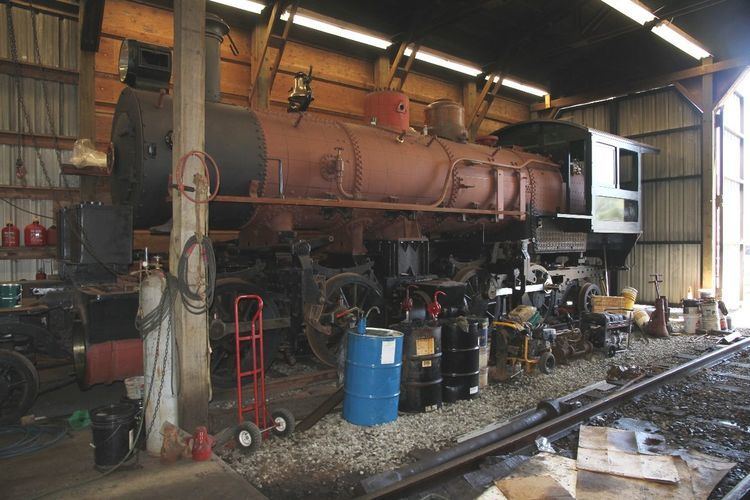 | ||
In Whyte notation, 2-4-4-2 refers to a railroad steam locomotive that has two leading wheels followed by four coupled driving wheels, a second set of four coupled driving wheels, and two trailing wheels.
Contents
Equivalent classifications
Other equivalent classifications are:
The UIC classification is refined to (1'B)B1' for a Mallet locomotive.
US Examples
This articulated wheel arrangement was rare in North America. Most were built as logging locomotives, presumably to better negotiate the uneven (and often temporary) trackwork that characterized such operations. The added mechanical complexity was found to be of dubious value, as reflected in their limited production and use.
There is one known surviving example: The Deep River Logging No. 7 "Skookum" (former Little River No. 126), Built by Baldwin Locomotive Works in June 1909. Retired 1956. which is currently (as of 2015) being restored in the Oregon Coast Scenic Railroad shop in Garibaldi, Oregon.
ALCO Number 7
Built by ALCO, this locomotive is a Mallet Compound engine, built for the Taupo Totara Timber Co for use on their 51-mile private tramway system, the Mokai Tramway between Putaruru and Mokai in the North Island. It is now preserved on the Glenbrook Vintage Railway, near Auckland, New Zealand and now carries the number 4. The engine is currently out of service awaiting overhaul, but can still be seen at the railway's Pukeoware workshops.
